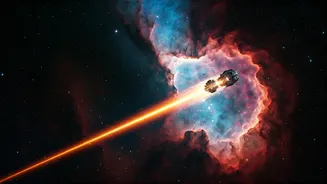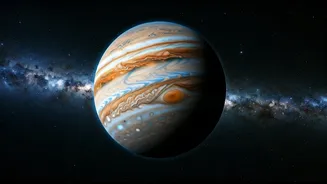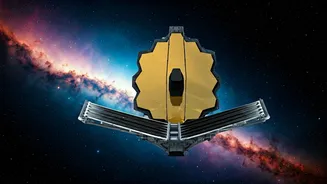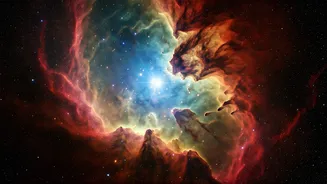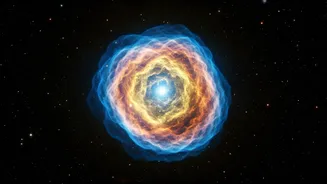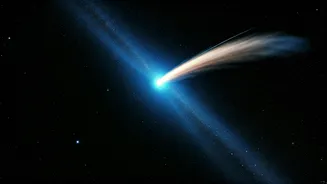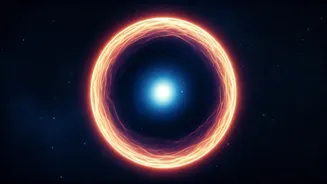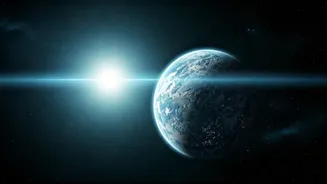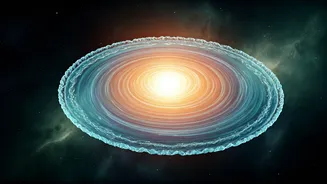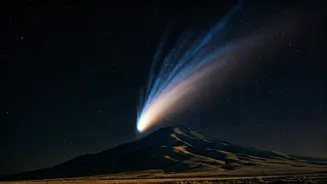Beyond Our Solar System
Interstellar objects, visitors from outside our solar system, have captivated scientists and space enthusiasts alike. These objects, unlike comets and asteroids
that orbit our Sun, originate elsewhere in the galaxy. The first confirmed interstellar object, 'Oumuamua, surprised astronomers with its elongated shape and unusual trajectory. 3I/ATLAS, another notable visitor, also presented unique characteristics, challenging existing models of object formation and solar system dynamics. Studying these objects offers invaluable insights into the diverse environments where they formed, potentially giving clues about the building blocks of planets and the conditions that support life elsewhere in the universe. These objects provide a unique opportunity to study material from other star systems. Scientists use telescopes and other methods to study their composition, size, and trajectory to learn more about their origins and the conditions of the environments they came from.
Journey Through Space
The paths of interstellar objects are shaped by a combination of factors including their initial velocity, the gravitational influence of stars and planets, and the interstellar medium. The journey of these objects through space is a testament to the vastness and emptiness of the cosmos. The trajectory of Comet 2I/Borisov, for example, was meticulously tracked, allowing scientists to determine its origin and study its characteristics. The study of these trajectories helps to understand the forces that shape the movement of objects in space, and also sheds light on how material can be exchanged between different star systems. Understanding the orbital paths of interstellar objects is crucial for predicting their future movements and for planning missions to study them up close. These observations require powerful telescopes and sophisticated data analysis techniques. The goal is to reconstruct the journey of each visitor and figure out where it came from.
Decoding Object Characteristics
The composition of interstellar objects, from comets to asteroids, provides invaluable insights into their formation and origin. Studying these objects involves analyzing their spectra, which can reveal the presence of various elements and compounds. For example, the analysis of 'Oumuamua's spectrum suggested it was made up of rock and metal, similar to asteroids in our solar system. The light emitted by these objects, or reflected off their surface, can be analyzed with the help of spectroscopes. The study of these objects also includes looking at their sizes, shapes, and surface features. Scientists study the dust and gas surrounding these objects as well, to reveal details about their composition and any processes they are going through. As astronomers learn more about the composition of these interstellar objects, they may discover new materials that don't occur in our solar system.
The Challenges of Research
Studying interstellar objects presents significant challenges. Their rapid speeds and fleeting appearances require constant observation and quick decision-making. Identifying and tracking these objects requires advanced telescopes and sophisticated observation techniques. The vast distances and faintness of these objects make them difficult to observe in detail. The short period that these objects are visible from Earth adds to the complexity. For example, a comet might pass by Earth at a distance of a few million kilometers, but it will be in view for a limited amount of time, making it difficult for scientists to gather enough information. Also, the small number of confirmed interstellar objects makes data collection a time-consuming process. Furthermore, analyzing data obtained from interstellar objects requires advanced computational techniques, given their unique orbital trajectories. The use of data from multiple sources requires great care to ensure accuracy.
Future Research Prospects
Future research on interstellar objects holds exciting potential. Missions to study these objects up close, for example, could provide unprecedented insights into their composition, structure, and origin. Developing new telescope technologies, such as advanced spectrographs and high-resolution imagers, will greatly enhance our ability to study these distant visitors. Further investigation will provide additional details of where the object was born. The application of machine learning and artificial intelligence to analyze large datasets will accelerate the discovery and characterization of these objects. International collaborations will be very important to combine different data. By observing the next interstellar object, scientists might be able to get a better picture of the variety of objects moving around the universe. It is likely that the future research will lead to even more amazing discoveries about the universe and our place within it.
